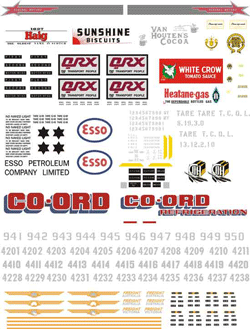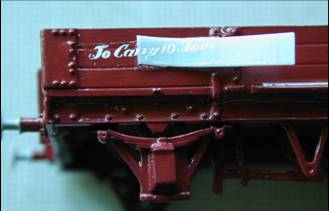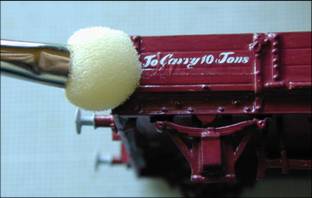Most decal/transfer film is very thin to enable it to conform to shapes more readily. If you soak it too long, the water tension under the decal film will cause the edges to curl under. The key to avoiding this is to soak the decal only long enough to have it release from the backing paper and to SLIDE it off the backing paper onto the model. Just follow the instructions below.
1. Transfers are best applied to a glossy surface. Apply glossy paint or spray a clear gloss coating on your model before applying transfers.
2. Carefully cut the transfer from the sheet. Cut slightly longer as shown in the photo and then to make it easier to slide the decal off the backing paper cut through the surface of the decal only as indicated by the box and arrow on the photo.
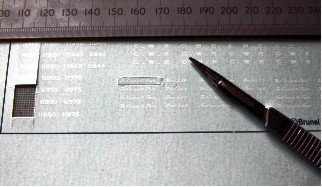
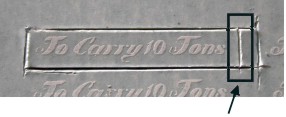
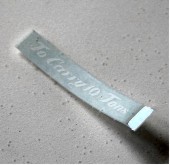
3. Using tweezers, dip the transfer into plain water. Remember to use a little water to wet the area on your model that will be covered by the transfer. Soak the decal in water until the transfer is just about to slide off the backing paper (usually about 30-40 seconds although it can vary). Another way of assessing when the transfer is ready is to wait until it just starts to uncurl (the backing causes the decals to curl when placed in water. As it absorbs water, the backing paper uncurls). Very gently test to see if the decal will slide on the backing paper. If not, then soak a little longer. You want the decal to just begin to slide on the backing paper. This will give the decal the maximum amount of glue on its back. An alternative is to use a sponge in a saucer of water but do not allow the water to overlap the top of the sponge. Lay the decal on the wet sponge instead of directly in the water.

